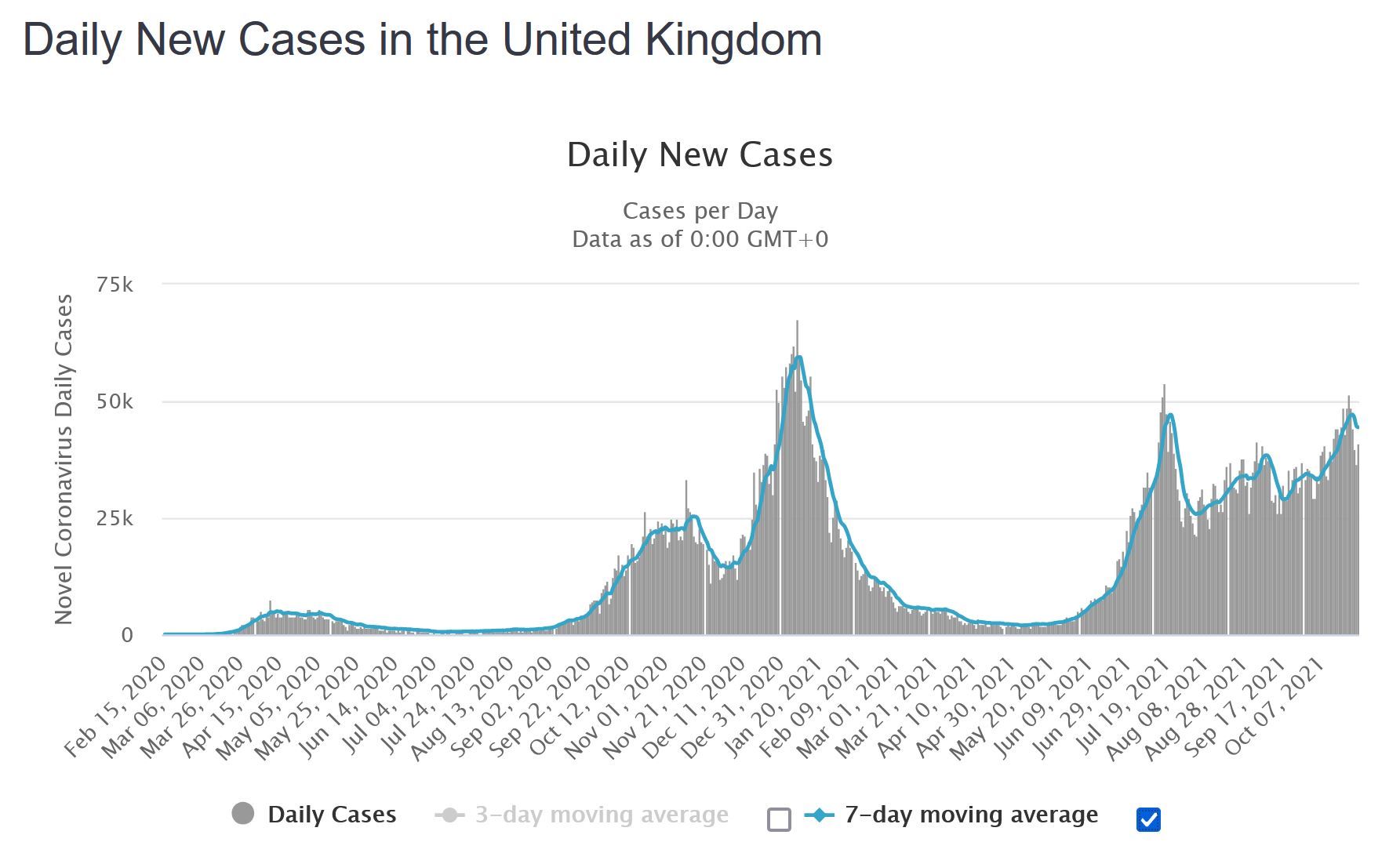COVID-19: Numbers Look Good, but Keep Guard Up
As of today, the outlook is very good and the pandemic is on a trajectory of burning out, but there are valid concerns which require that we continue our vigilance and public health strategies.
Predicting the course of the COVID-19 pandemic is like predicting the stock market. We are now entering our fourth trough after a major surge. Similar to previous lulls in infections, many are predicting the achievement of herd immunity and the dissipation of the pandemic. Obtainment of herd immunity was also predicted in the spring of 2021 after the winter holiday surge. This prediction was bolstered by a CDC study which found SARS-CoV-2 antibodies in 83% of blood donation specimens. Of course Delta smashed these hopes and caused a fourth devastating wave in August and September of this year. Although there are no guarantees, I hope that after this fourth surge, the herd immunity advocates are right.
There are several reasons for optimism. First, cases are plummeting in the United States. Even more people have been exposed to the virus and vaccinated which should bolster our herd immunity even further. Second, according to outbreak.info there does not appear to be a dominant strain which is developing. Even the dreaded Delta Plus strain (AY.4.2) does not appear to be gaining a foothold.
This was not the case in June 2021, when cases from the Alpha variant were plummeting. We sounded the alarm, since a new variant, the Delta variant, although still having a small number of cases was fast increasing in dominance and numbers. By the end of June 2021, the total number of SARS-CoV-2 cases was still very low, but the Delta variant was exponentially increasing, comprising approximating 30% of all sequenced cases.
Source: Outbreak.info

Many are currently worried about the Delta plus variant (AY.4.2) which is reported to be 10% to 15% more infectious and may also have immune escape properties. But this variant has been detected in the United States since mid-July and has not yet had significant growth in face of the dominant Delta variant.
Source: Outbreak.info

However, analyzing the course of this disease in other countries gives rise for concern. It needs to be stated that poorer countries do not have the testing capability or the infrastructure to do accurate reporting. Underreporting is all too common. In Russia, the official number of deaths is approaching 250,000 but according to the Moscow Times, the number of excess deaths by the end of July was 600,000. The same amount of underreporting has been reported in India where the actual death toll as of July is estimated to be between 1.5 and 5 million individuals. That being said the data from the United Kingdom and Israel is felt to be accurate and reflect the severity of the pandemic.
In the United Kingdom, cases from the Delta variant spiked early on July 17, 2021, and then rapidly fell in half. Then cases rose with the Delta plus variant on October 28, 2021, reaching another peak almost as high as the one in July. This raised concerns that under certain conditions, the Delta plus variant can successfully compete with the Delta variant and cause another surge in the US.
Vaccination rates are another area of concern. The US has 58% of its population fully vaccinated, as the United Kingdoms’ full vaccination rate is 68%. Overall, the US population’s full vaccination rate is 52nd in the world and is behind most European nations. Portugal has 86% of its population fully vaccinated and the U.A.E. has 88% of its population vaccinated.
In addition, the US is still not following good public health advice. In many areas, masks are not widely used indoors and the anti-vaxxer movement is still spreading disinformation and discouraging vaccinations. Last weekend, there was a major anti-vaxxer convention at the Gaylord Opryland Resort & Convention Center in Tennessee where none of the participants were reported to have worn masks, despite signs throughout the hotel stating unvaccinated individuals should wear them.
Infection Control Today® has reported in the past that SARS-CoV-2 is becoming endemic and finding animal hosts which affords ample opportunity for the virus to mutate and evade vaccines. Laboratory tests which predict vaccine and immune effectiveness often do not take into consideration the increase in viral load a patient has when infected with these more infectious variants. Thus, laboratory tests may not be truly predictive of resistance to future variants.
Thus, as of today, the outlook is very good and the pandemic is on a trajectory of burning out, but there are valid concerns which require that we continue our vigilance and public health strategies to limit the speed of the virus.
Show, Tell, Teach: Elevating EVS Training Through Cognitive Science and Performance Coaching
April 25th 2025Training EVS workers for hygiene excellence demands more than manuals—it requires active engagement, motor skills coaching, and teach-back techniques to reduce HAIs and improve patient outcomes.
The Rise of Disposable Products in Health Care Cleaning and Linens
April 25th 2025Health care-associated infections are driving a shift toward disposable microfiber cloths, mop pads, and curtains—offering infection prevention, regulatory compliance, and operational efficiency in one-time-use solutions.
Phage Therapy’s Future: Tackling Antimicrobial Resistance With Precision Viruses
April 24th 2025Bacteriophage therapy presents a promising alternative to antibiotics, especially as antimicrobial resistance continues to increase. Dr. Ran Nir-Paz discusses its potential, challenges, and future applications in this technology.
